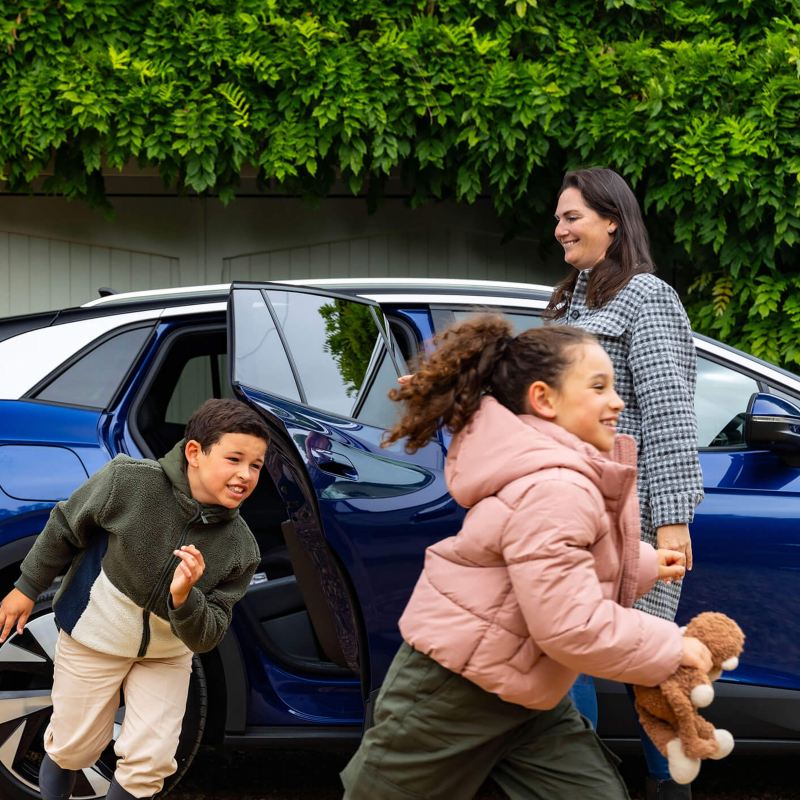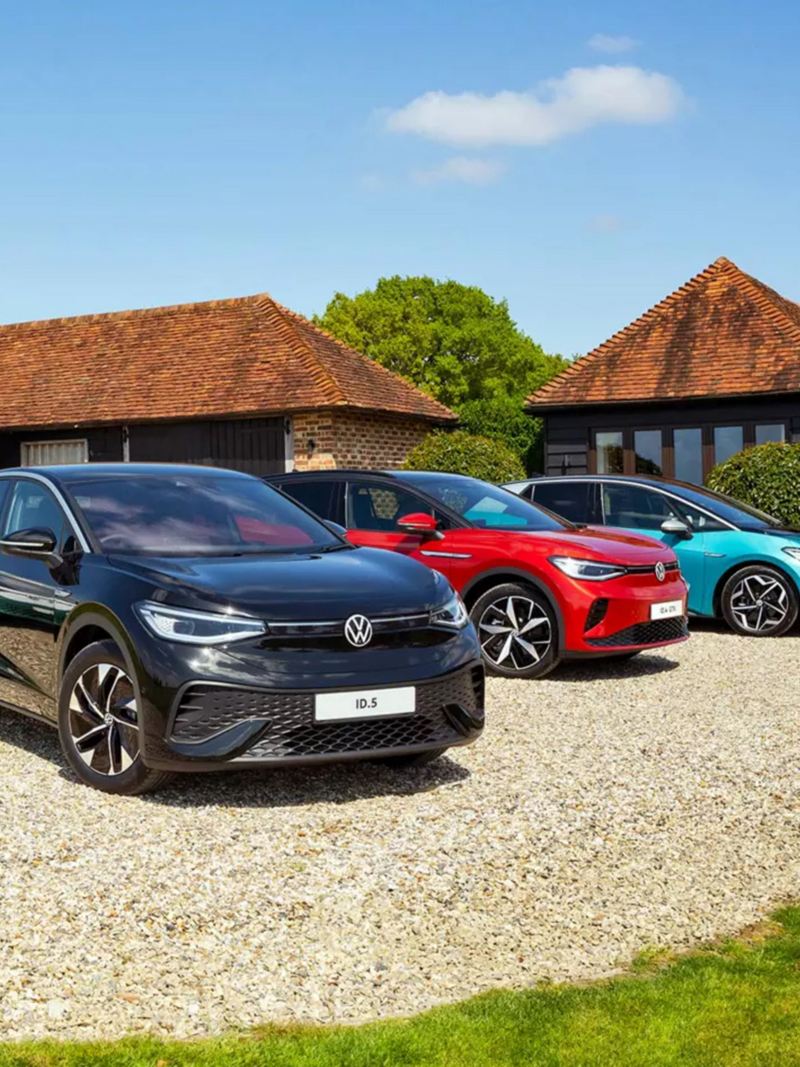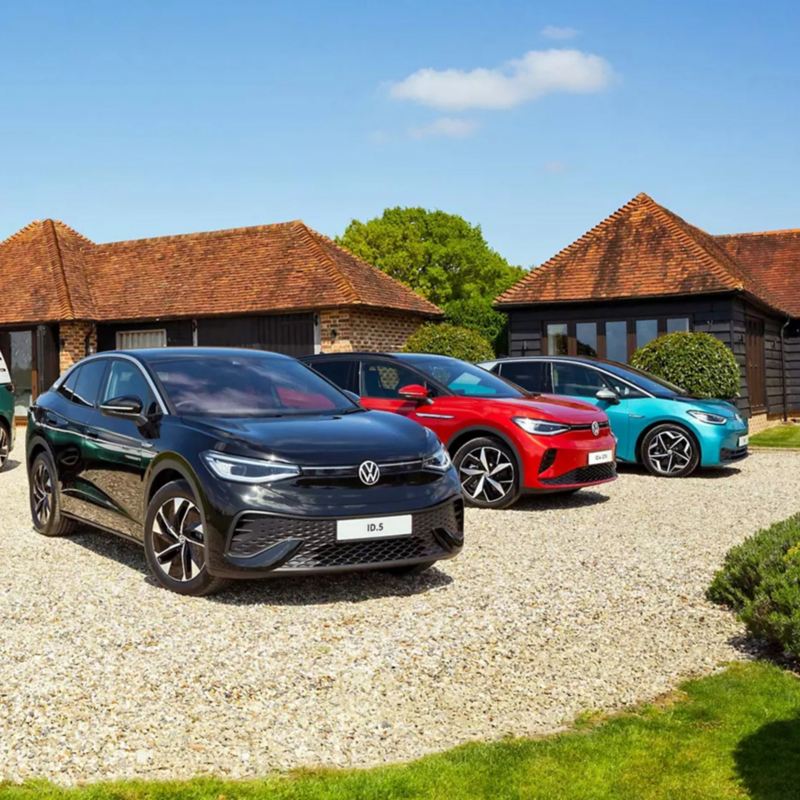Recycling your battery
The regulations for the batteries that go into electric vehicles are extremely strict. At Volkswagen, we use this to drive our research into increasing the effectiveness of not just new batteries, but used ones too.
Maximising the life of the battery plays a central role in our Volkswagen Group sustainability strategy.
Accelerating, braking, quick-charging at a station, overnight charging at home. All of these put strain on batteries. Environmental changes can also impact the battery, like the change from the cold winter to a hot summer. Then there’s the extreme conditions the battery is placed under, like moisture and hard vibrations. But despite this, Volkswagen offers robust battery warranties to assure owners of the durable capacity of our batteries. Inevitably however, there will come a time when the battery is no longer fit for use in a car, and that’s when it becomes a second-life battery.
Reuse.
In addition to an optimal recycling process, the extension of the working life plays a central role in our group battery strategy. In principle, the batteries should be repaired or reconditioned in the first instance or be converted into second-life projects for complete reuse,” says Tobias Enge, a group strategist in the business field of e-mobility and infrastructure. “Further processing in alternative environments – for example into mass-storage devices – is being researched as part of use cases and developed for practical applications.” Essentially this means that used vehicle batteries are bundled together to form a much larger battery, which in turn help to power both Volkswagen plants and co-operative projects with suppliers and cities.
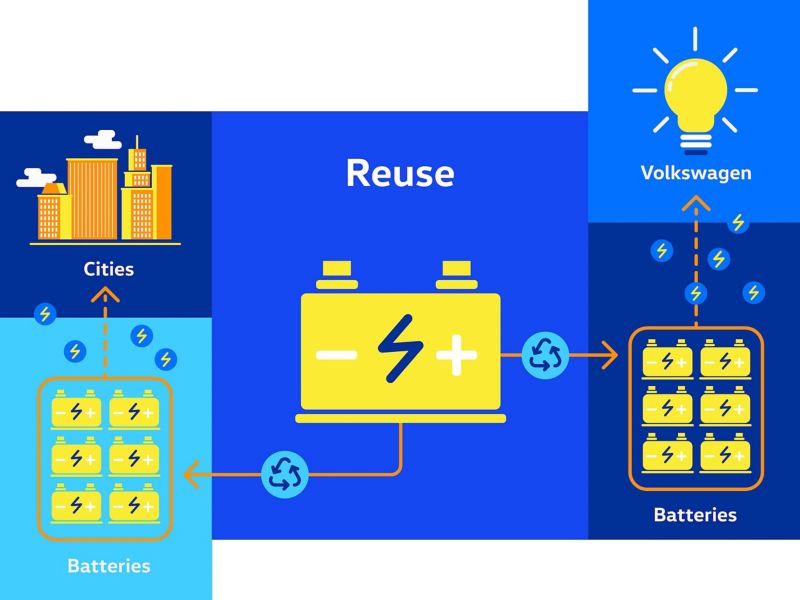
Remanufacturing.
By replacing certain components found inside, some used batteries can be used in electric cars again. Parts taken from used batteries can also go into storage and used again later.
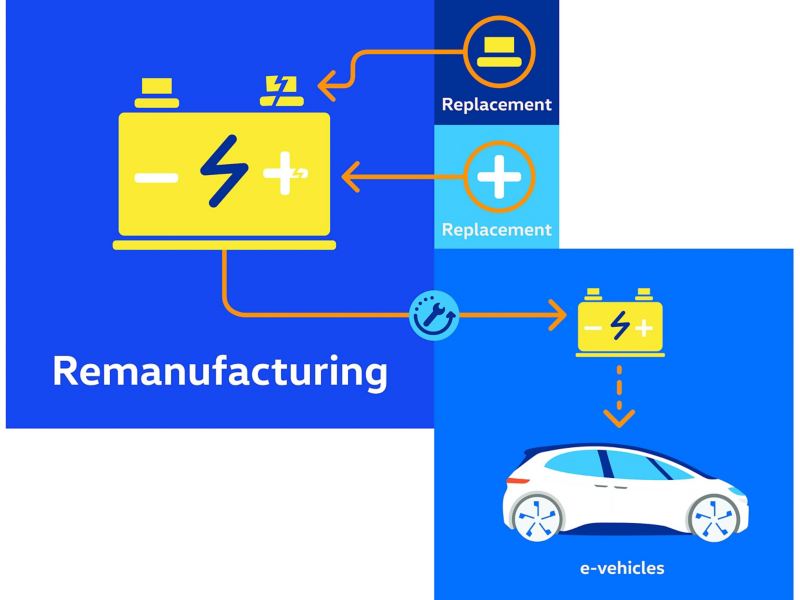
Recycling.
Sooner or later, the time comes for a battery to be recycled. This is done carefully and safely in co-operation with a number of recycling partners. “The batteries are dismantled, crushed and reprocessed. Here, raw materials such as nickel (28Ni), copper (29Cu) and cobalt (27Co) are recovered in large quantities and can then, for example, be reused in the production of new battery cells.” Tobias Enge explained. This all ensures that we keep waste to a minimum while manufacturing our batteries.
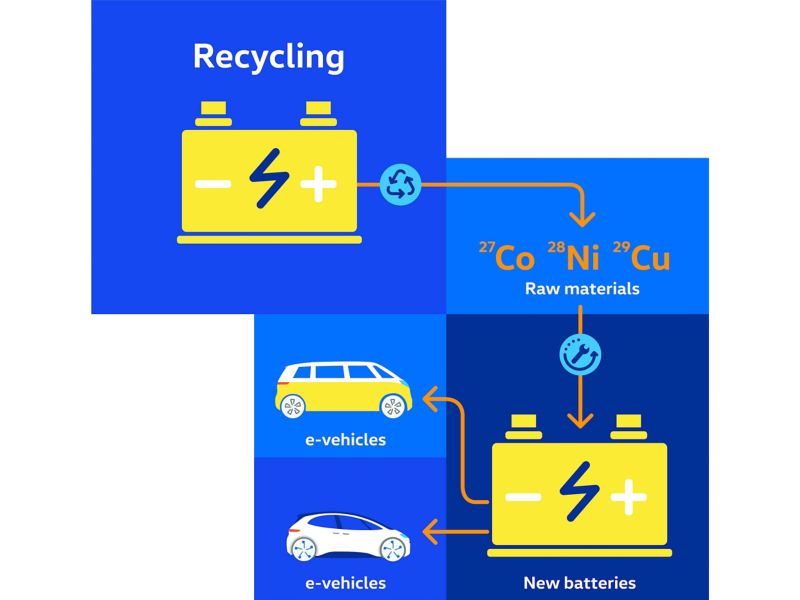
As soon as there are enough reusable batteries and electric vehicles, these strategies will be rolled out across all of the Volkswagen Group.
Our electric vision

Our electric vision
Volkswagen’s future is electric. We’re committed to developing cars and technologies that open up the possibilities of electric driving to all. Making the switch to electric not only benefits the environment, it could also help you save money and discover a new and exciting way to drive.

Our electric vision
Volkswagen’s future is electric. We’re committed to developing cars and technologies that open up the possibilities of electric driving to all. Making the switch to electric not only benefits the environment, it could also help you save money and discover a new and exciting way to drive.

Electric pedigree
The development of our revolutionary ID. range didn’t happen overnight. Our electric history first started in 1970. Let us take you back to the start of our journey towards a more sustainable future.

Leading the way
Our goal isn’t just to sell electric cars. We are designing a range of vehicles with high performance, that go further and put efficiency at the heart of their design.
